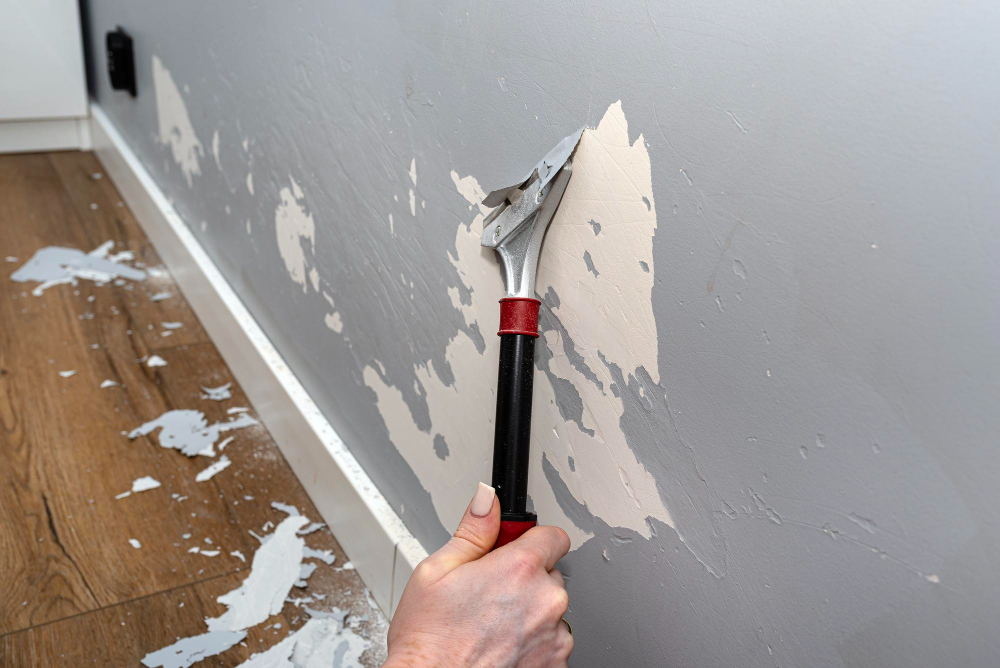You all have seen that hole in the wall you pass by daily, which bothers you. What started as a small dent or an unintentional bump has now transformed into a constant eyesore, mocking from the room’s corner.
For one homeowner keen to fix things but lacking experience, a rough doorknob may soon become a fist-sized hole. Every glance in its direction feels like a challenge: “Go ahead, try to fix me. You’ll make it worse”.
It is the right time to take action. Hiring a handyman to repair a small hole in your wall can be costly, but tolerating it is no longer an option. Therefore, with some research and the suitable tools and materials, you can patch it up yourself as a simple weekend project.
If others can turn their wall from “What happened here?” to “Was there ever a hole?”, you can too. This blog will discuss the best tools and methods to fix different types of wall holes, from tiny nail holes to larger gashes.
Identifying the Types of Wall Holes
Before you start fixing the wall, you must understand what type of hole you are dealing with. This helps to determine the tools and materials required for an effective wall repair.
- Small Holes (Under ½ inch): Small holes, such as nail holes, screw holes, and minor dents, are all easy to repair and typically require only spackle or filler.
- Medium Holes (½ inch to 6 inches): Frequently caused by doorknobs or removed anchors, these holes require more effort and typically require a mesh patch and joint compound.
- Large Holes (Over 6 inches): These large holes can result from impacts or structural issues, and are repaired by cutting and replacing wall sections with backing support and multiple compounds.
What to Use to Repair Different Types of Holes in a Wall?
Knowing the proper methods for wall repair can save you time and money, whether dealing with small nail holes, medium dents, or major gaps. Each type of wall damage has specific steps for repair. Here’s how to handle different kinds of wall damage effectively.
What to Use to Fix Small Hole in the Wall?
To repair small holes in the wall, such as those from nails or screws, you will require the following materials:
- Spackle or lightweight joint compound
- Putty knife
- Sandpaper
- Primer and paint
Now, you can take these steps to repair small holes:
- Clean the Area: Clear debris from the hole using a utility knife or sandpaper.
- Apply Spackle: Press spackling paste into the hole with a putty knife, adding a little extra to ensure you cover it completely.
- Smooth and Feather Edges: Scrap any excess material to ensure it is flattened against the wall for a smooth transition.
- Let It Dry: Let the spackle dry for 1 to 2 hours or as directed by the product instructions.
- Sand Lightly: Use 120 to 150 grit sandpaper to smooth the repaired area.
- Prime and Paint: Apply a primer before painting to avoid visible patch marks – also known as flashing.
Note: For tiny holes, toothpaste or white caulk can be a quick, temporary fix, but spackle is the appropriate lasting solution.
What to Use to Repair Medium Holes in the Wall?
For repairing medium holes that doorknobs or removed anchors can cause, you can use materials like:
- Drywall patch kit
- Joint compound
- Sandpaper
- Paint
Are you prepared to repair medium-sized holes in your walls? Follow these straightforward steps:
- Cut a Clean Opening: Use a drywall saw or utility knife to form a square opening around the hole.
- Install Backing Support: Insert a wooden slat or a scrap piece of drywall behind the hole and fasten it with screws.
- Cut and Secure a Drywall Patch: Insert a new piece of drywall into the hole and secure it to the backing with screws.
- Apply Joint Tape: Cover the seams with self-adhesive mesh tape or paper tape.
- First Coat of Joint Compound: Apply a thin layer of joint compound over the tape, feathering the edges to blend them in.
- Second and Third Coats: Once the first coat dries, apply extra thin layers, sanding between each coat with 220-grit sandpaper.
- Prime and Paint: Use an excellent primer to ensure uniform paint absorption before painting the patched area.
Note: To speed up repairs, you can use a pre-made drywall patch (like 3M’s Patch Plus Primer) for holes measuring up to 6 inches.
How to Fix Large Holes in the Wall?
To repair large holes resulting from accidents or significant structural impacts, you can use materials such as:
- Drywall sheet
- Drywall saw
- Furring strips or wood backing
- Joint tape
- Joint compound
- Screws, screwdriver or drill
- Sandpaper, primer, and paint
To fix large holes in your walls, you can take these steps:
- Cut Out the Damaged Section: Use a drywall saw to eliminate the affected area, ensuring it is square or rectangular.
- Install Wood or Metal Backing: Secure 2×4 braces inside the wall using drywall screws for support.
- Measure and Cut Replacement Drywall: Cut your new piece to match the thickness of the existing drywall, usually ½ inch.
- Screw in the New Drywall: Attach the new drywall to the backing and leave a small gap for expansion.
- Tape and Mud the Seams: Place joint tape over the seams, then apply three or more coats of compound, feathering outward for a smooth transition.
- Sand Smooth: Use a sanding sponge or pole sander to achieve an even finish.
- Prime the Area: Roll primer over the whole repaired section to avoid blotchiness in the final paint.
- Paint the Repaired Section: Once the primer is dry, paint the area to match the surrounding wall.
Note: For added strength and easier installation, consider using drywall clips, like California Patch, instead of wood backing.
Bottom Line
Fixing a hole in the wall is simpler than you may expect. Whether dealing with a small hole or a large damaged area, the right tools, materials, and methods will help you achieve a professional-quality finish after making the necessary repairs. Focusing on these key elements can help you restore your wall’s original beauty and significantly enhance your home’s overall appeal.
If you are not a DIY person then feel free to contact our handymen in Virginia. We provide handyman services in Sterling, Fairfax, Leesburg, Great Falls and all across Virginia.

